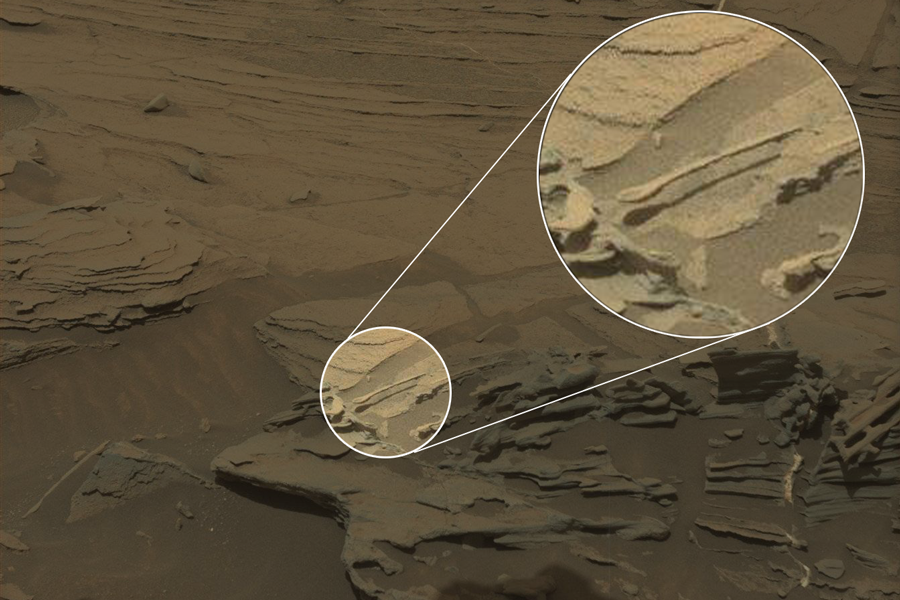Did Curiosity really find a levitating spoon on Mars?
Loading...
For a while, there was the Mars rat – or if you squinted, maybe some kind of lizard.
Then came the Martian jelly doughnut – later shown to be a piece of broken rock moved by the Opportunity rover. This summer, it was a pyramid, theorized by some to be the creation of intelligent life. NASA said it was just an ordinary rock.
For years, the curiouser and curiouser have speculated about structures on the Red Planet, and for all of NASA’s official dismissals, can’t seem to stop from hypothesizing about the Curiosity rover’s latest “sighting”: a floating spoon.
Users on Unmanned Spaceflight, an online forum moderated by the Planetary Society, described the object as “ridiculously long and delicate” and a “soup spoon.”
“Once you spot it, it becomes obvious; it really does look like a spoon hanging in the air, just above the surface of some layered rock,” reports Discovery News’ Ian O’ Neill. “But as Mars is devoid of any civilization, advanced or otherwise, that is capable of manufacturing said spoon, there’s probably a more logical answer.”
“It's unclear how old the delicate feature may be or how long it will be able to survive on the surface before its worn down by Martian weather,” writes ABC News.
NASA has not confirmed what the object is, but it did say that the image could simply be another case of Martian pareidolia, according to the Tech Times. The term refers to a psychological phenomenon of people interpreting things they see as a familiar pattern or object.
The “spoon” could be an optical illusion caused by the shadows, writes Discovery's Mr. O’ Neill. He goes on to conclude:
So, once again, this little nugget of Mars pareidolia is a rock that happens to be shaped like a spoon. But it’s a fascinating rock, and an awesome find, providing some geological hints as to the erosion processes that can etch out such delicate formations on the surface of the Red Planet.








